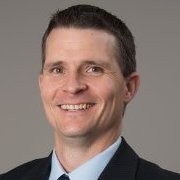Noise Sensitive Area, “NSA”
This is Part 4 of The FERC 55 dB(A) Ldn Requirement series, where we learn the practical ins and outs of this requirement.

Any good noise ordinance or regulation should specify where the sound level limit shall apply. Typical examples include specifying a certain distance away from operating equipment or perhaps along a facility property line. The compliance measurement should be taken at the location(s) where the rule applies. The FERC sound level limit applies "at any pre-existing noise-sensitive area (such as schools, hospitals, or residences" (18 CFR § 380.12). In this post, we will consider some practical aspects related to identifying, defining, and assessing sound levels at NSAs.
One thing to note about the quotation above is that examples of NSAs provided in the regulation are listed parenthetically. However, this should not be construed as an exhaustive list. FERC's Guidance Manual for Environmental Report Preparation expands the list to include day-care facilities, long-term care facilities, churches, and libraries. It goes on to state that "NSAs may also include campgrounds, parks, and wilderness areas valued specifically for their solitude and tranquility."
Sometimes, an "NSA" is a single residence. In remote areas where there may be only a few residences within 1 mile of the site, this is often the case. However, one should always keep in mind that "NSA" includes more than just residences. It can be quite cumbersome to label as an NSA every residence, school, church, etc. within 1 mile of a site or station that lies near suburban or urban areas. For these cases, it is helpful to remember that the 'A' in NSA stands for "Area." This begs several questions:
- How should individual residences, schools, etc. be grouped into areas?
- How large should/can an NSA(rea) be?
- Does every single house within a 1-mile radius have to be identified in some way?
I would say that the answer to each is that it depends on many factors. However, there is a saving grace: sound attenuates with distance. It is generally sufficient to focus on the NSAs nearest the station or site within any given direction. Once the compressor station sound level contribution is predicted for those nearest NSAs, it is generally a safe assumption that the station sound level contribution will be less at a more distant location. This assumption will be valid for nearly all cases, although topological characteristics can lead to unusual exceptions. Typically, no more than 8 NSAs are necessary. Sometimes there can be no NSAs within 1 mile of the site.
The more complicated issue is establishing the baseline sound level at each NSA. Where to place the sound level meter? This question must be answered by the qualified noise control practitioner assigned the task. It is specific to each location and project, and oftentimes can be unique. There are guidelines, standards, and industry references that help. However, there is no substitute for experience in this regard. Generally, a sound level measurement is taken at the residence, church, etc. within an NSA that is nearest to the station/site, or is expected to be the most impacted by noise.
Summary:
- NSAs include schools, hospitals, residences, day-care facilities, long-term care facilities, churches, and libraries.
- NSAs may also include campgrounds, parks, and wilderness areas valued specifically for their solitude and tranquility.
- The 'A' in NSA is for "area;" individual residences, schools, etc. may be grouped.
- Typically, quantifying the noise impacts at the nearest NSA in each direction is sufficient, because sound attenuates with distance.
- Assessing baseline sound levels requires the skills of an experience noise control practitioner.
 About the Author - Tim Simmons, Ph.D. - USSI Director of Industrial Acoustics
About the Author - Tim Simmons, Ph.D. - USSI Director of Industrial Acoustics
Dr. Tim Simmons manages USSI's Industrial Acoustics Department. Tim comes to USSI with a wealth of Acoustical and Noise Control knowledge and real-world experience. Tim holds a Ph.D. in Physics from the University of Mississippi and a B.S. in Engineering Physics from the University of Tennessee.
Member INCE, ASA, ASME
